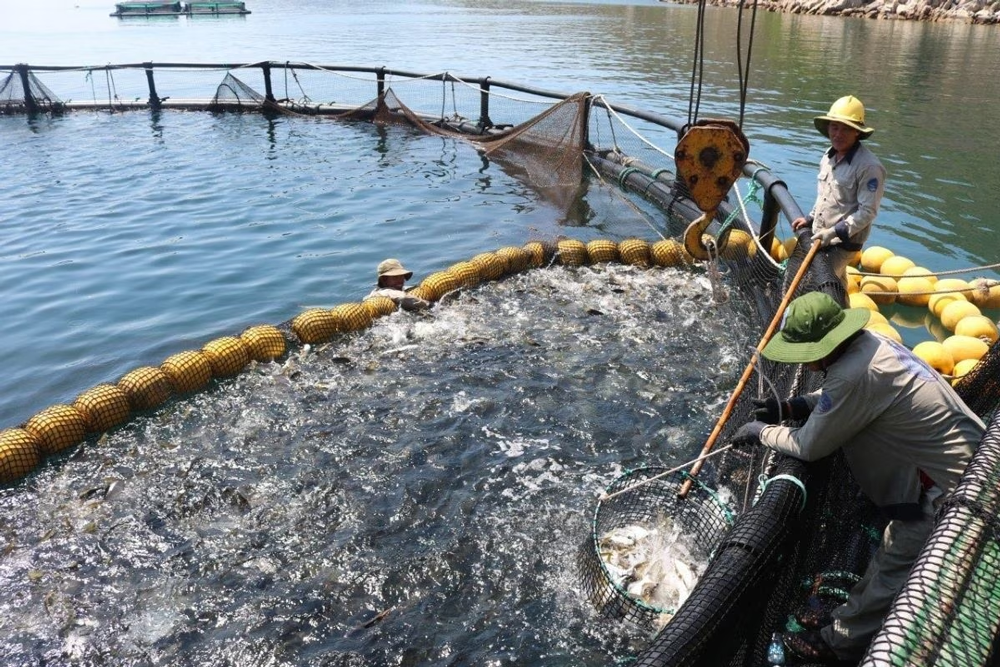Vietnam Seafood
Trends in seafood export markets in 2024
According to the Vietnam Association of Seafood Exporters and Producers (VASEP), in 2024, many difficulties will continue to dominate the situation of seafood production and export. In addition, there will be additional challenges that will slow down the recovery of exports next year.
VASEP has just released 10 comments on market trends and seafood export forecasts in 2024.
First, inflation in major countries has been contained, the world economy has bottomed out, but recovery is slow, affecting demand for seafood consumption.
Second, the Russia-Ukraine conflict, fighting in the Middle East and other geopolitical issues around the world certainly disrupt global trade, including seafood. The consequences will increase transportation costs and increase prices of input products for aquaculture and seafood processing. It could also cause a new inflationary storm that will affect seafood consumption demand in 2024.
Third, Vietnamese shrimp will continue to compete with Ecuador and India in terms of price and supply, the oversupply situation may continue until the first half of the year (world shrimp production in 2024 will increase by 4,8% to 5,9 million tons).
Ecuador and India are increasing their market share in the US, China, EU and Japan, while increasing processed shrimp exports although the proportion is still modest.
Fourth, pangasius inventory in the US, China, and EU markets is no longer a problem. Export prices will increase again in markets. In addition to frozen fillets, the trend of importing value-added pangasius and by-products (fish maw, pangasius balls) continues to increase.
Fifth, the IUU yellow card continues to be a challenge. If not resolved in 2024, it will cause exports to the EU to stagnate because procedures for confirming and certifying exploited seafood are still inadequate due to resource factors, Human resources and infrastructure are not adequate. Industries such as tuna, squid, octopus and marine fish are most affected.

Sixth, in terms of consumption, market demand focuses on cheaper product segments such as canned fish, raw fish for processing canned fish, dried fish, and dried shrimp.
Seventh, the cycle of price decline for many aquatic species may continue until the end of the first half of 2024.
Eighth, feed costs continue to be a major challenge for both the shrimp and pangasius farming industries
Ninth, due to the slow recovery of demand and the increasing trend of importing cheap shrimp from Ecuador. Therefore, exporting shrimp to the US will be more difficult if anti-subsidy tax (CVD) is imposed.
Finally, Chinese market demand recovered stronger, but prices were low, making it difficult to compete.
According to VASEP, there will be a trend of increased processing prices in the Chinese seafood processing industry and China’s move to ban the import of Japanese seafood causes Japanese factories to rush to Vietnam to find processing partners. In addition, businesses may increase import of raw materials for production and business and increase processing for the Japanese and American markets.
It is forecasted that Vietnam’s seafood exports will gradually recover in 2024 and become more positive in the second half of the year. With adaptation and adjustment to the market context, it is predicted that seafood businesses will help the industry’s export sales recover to 9,5 billion USD – 10 billion USD in 2024.
Of which, the shrimp industry targets 4 billion USD, pangasius reaches about 1,9 billion USD, and the remaining seafood products are forecast to earn about 3,6 – 3,8 billion USD.
(Source: https://www.vietnam.vn/)



 Tiếng Việt
Tiếng Việt